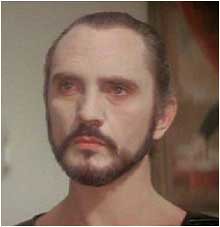Pullman Leg-Puller

Strange stuff from Slate this morning. I was perusing this article by the beautifully-named Austan Goolsbee, and felt that the whole thing stank. Goolsbee doesn't quite come out and say it, but seems to suggest that the bus drivers of Chicago might do well to learn from their counterparts in Chile. The idea, put simply, is that bus drivers in Chile are paid according to the number of passengers they carry, and this might be worth emulating elsewhere, according to a study from David Reiley of the University of Arizona and Juan Carlos Munoz of Pontificia Universidad Catolica de Chile.
The report, unfortunately, must be paid for, and I'm not being paid to throw rocks at Slate, but the article leaves me thinking that neither the authors of the report nor Goolsbee have engaged with the qualitative differences between Chilean and Chicago bus drivers. Put simply, the bus drivers backed up on Lake Shore Drive seem to be short-haul urban routes, where a bus would have to stop every couple of blocks. Those in Chile, running long-haul routes, would be much better able to adjust to traffic conditions. And they do. Chile is such a long and skinny country, long-distance coaches are not the alternative to trains, they are the trains.
Further down the article, Goolsbee then does mention that 95% of the bus drivers in Santiago, Chile's capital city, use incentive pay based on the numbers of passengers they carry. Which suggests that there may be some way for drivers on urban routes to respond to traffic conditions. But still, I'm not sure how they can, without missing stops. It might be possible to compare drivers on suburban routes in Santiago and Chicago, but that's not what we get. More info please.
[Update: Not convincing?, Felix? Bah, humbug. Dealing with that article was like fighting a cloud. Now what toll-roads do to public transport in Santago is another problem.]




0 Comments:
Post a Comment
<< Home